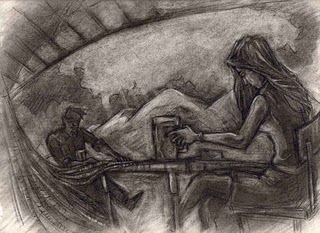Shakespeare’s Sonnet XXX is a reflection on mourning of his lost friend and it is also called duty sonnet, because it sucks up to someone. William Shakespeare was an English poet and playwright. His early plays were mainly comedies and histories, genres he raised to the peek by the end of the 16th century. He was very criticized because his sonnets has a deep meditation on the nature of love, sexual passion, procreation, death, and time. According to the Wikipedia website, the production of Shakespeare’s sonnets was in some way influenced by the Italian sonnet: “it was popularised by Dante and Petrarch and refined in Spain and France by DuBellay and Ronsard.” Regarding his sexuality, there are few details known. One of them is, despite he had been married with Anne Hathaway, it is known that his sonnets are an evidence of his love for a guy. My objective here is to discuss about Shakespeare’s sonnet, taking into account the alliteration as a metaphor of continuation. To begin with, it is important to remember that alliteration is the repetition of the initial consonant sounds or the same kinds of sounds at the beginning of words or in stressed sylables, while metaphor is a figure of speech that constructs an analogy between two things that have something in common. By way of explanation, here is one example:
When to | the sess | ions of | sweet si | lent thought
I summ | on up | remem | brance of | things past…
This alliteration allows the reader to realize that there are a mix between the present and the past, because it constructs a continuation of the meaning with the continuous sounds /s/, /z/, /ʃ/, /ʒ/, /S/, the metaphor arise as a support for the interpretation. For this, observe the sonnet:
When to the sessions of sweet silent thought
I summon up remembrance of things past,
I sigh the lack of many a thing I sought,
And with old woes new wail my dear time’s waste:
Then can I drown an eye, unused to flow,
For precious friends hid in death’s dateless night,
And weep afresh love’s long since cancell’d woe,
And moan the expense of many a vanish’d sight:
Then can I grieve at grievances foregone,
And heavily from woe to woe tell o’er
The sad account of fore-bemoanèd moan,
Which I new pay as if not paid before.
But if the while I think on thee, dear friend,
All losses are restor’d and sorrows end.
The metaphor begins with the words “sessions” and is continuing through “summon up”, “precious”, “cancell’d”, “expense”, “tell o’er”, “account”, “pay” and “paid”, to “losses are restor’d”. It probably refers to financial senses, because the sonnet plays with the speaker’s feelings as a non-paid account. Besides that, the words “lack”, “dear”, “waste”, “unused”, “dateless”, “foregone”, and “dear” again carry with themselves a secondary financial sense. Regarding to the poet’s sorrows, the words “sigh”,”old woes”, “new wail”, “drown an eye”, “unused to flow”, “weep afresh”, “moan”, “grieve at grievances”, “heavily”, “from woe to woe” “sad”, “fore-bemoaned moan”, and “sorrows” suggest the creation of another image. Although its elements are being metaphorical, it is not of our interest. The metaphor here is between the sighs and tears and the cancelling of debts and the spending money, according to some analysis. But the alliteration here occurs between “grieve at grievances” as a shape of continuation of the past in the present. On the one hand, it provokes an idea of the financial sense, because its elements refer to it and, on the other hand, the idea here is a crystallization of the speaker’s sorrows, because those words point out to that too. But the more important than bringing to light these shapes of alliteration is to understand how they affect the sonnet meaning. The word “dateless”, for instance, suggests that the death has no end, because the death of friends is only a poetic subject or a negotiation between the statement of the sonnet and the metaphoric reference in the text. Conversely, both images are referring to the death or loss of friend. Nevertheless, the Sonnet XXX, reflects about the love between friends and what happening when one of them dies, using for this purpose some alliterations and metaphoric shapes to evidence that are a continuation of the past in the present and perhaps in the future.
__
by José André Santos de Santana





